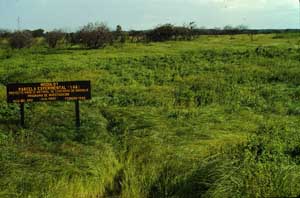|
|
 50 1.5 years biodegradation DHJanzen100053.jpg high resolution
|
|
| Within one year, the site looked like DHJanzen100053.jpg above, though DHJanzen100053.jpg above was actually taken 3 years later. In short, the wild ACG biodiversity had not only eaten the 100 truckloads of orange pulp/peel, but the process itself had produced a deep black (carbon rich) loam soil that was an excellent seed bed for broad-leafed herbs, and had also killed the perncious grasses that had occupied the site. We had seen enough from this experiment to know that the ACG could offer an environmental service to the orange industry, and even charge them for it. | ||
back to lecture slides
or skip to: